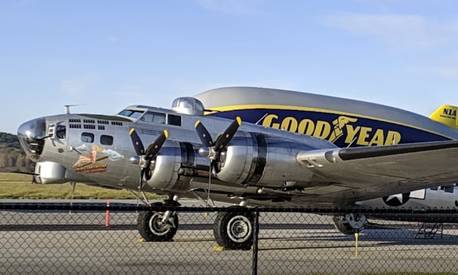
Located at 500 Dunn Rd., the Orange County Airport (NY) is one of Montgomery’s major highlights, with the commercial area one mile southwest, New York City 50 miles to the north, and Stewart International Airport 8 miles west.
About the Orange County Airport
The Orange County Airport in New York is a non-tower airport situated near the intersection of state routes 211 and 416, two km southwest of the village of Montgomery in the Town of Montgomery, United States. The airport is included as a general aviation facility in the National Plan of Integrated Airport Systems for 2011–2015. It was the second busiest airport in New York, with around 125,000 takeoffs and landings. Currently, around 100,000 takeoffs and landings are managed at the airport each year, 80% of which are recreational, and the remaining 20% are commercial.
Orange County Airport features 596 acres of land and is located at an altitude of 364 feet. It also features two runways that are 3/21 by 100 feet and 8/26 by 100 feet, respectively. In January 2019, the airport also conducted a vital runway realignment project for better takeoffs and landings.
Besides commercial flying, the airport is a well-liked site to park private planes due to its low traffic volume and remote location. In fact, aspiring local pilots frequently use the airport to hone their abilities or learn to fly.
What’s great about this airport is that you can easily tune into the tower and hear transmissions between pilots and the airport while driving nearby since they are repeated on a one-watt station at 88.1 megahertz. According to reports from 2006, county authorities negotiated with a local developer to construct 10 private, opulent hangars to meet what they saw as a burgeoning need and pay for the airport without increasing taxes.
History
Due to the expansion of the US army during World War II, there was a need for more training facilities in the region in the 1940s. In addition to locations in Ulster and Dutchess County, an airfield in Montgomery was established to act as Stewart Airport’s auxiliary field. West Point cadets were instructed how to fly by the US Army Air Corps on these extra fields.
The airport was given to the County by the US War Assets Administration in 1949 to advance air travel and national security. The Eastern Air Defense Forces utilized it again in the 1950s to support the Korean War effort before redesigning it to serve as a communications transceiver station.
The Orange County Airport was completely classified as a general aviation facility in the National Plan of Integrated Airport Systems from 2011 to 2015. Orange County Airport keeps improving its facilities and infrastructure to support general aviation’s continued growth and success.
By strategically planning an airport that meets the present and future needs of general aviation in Orange County and neighboring counties, including the New York City Metropolitan Area, the airport’s mission is to foster the economic development of New York State.

Over 140 Commercial and T-hangars
The most popular kind of storage area for planes with a wingspan up to roughly 40 feet is a T-hangar unit. These flats are widely dispersed among the ramps and are also offered on the east ramp as condominium units. These kinds of hangars are very adaptable since they provide enough space for most general aviation aircraft, an area for a workbench and a few cabinets to store tools, equipment, and other necessities for aircraft.
Every T-hangar at Orange County Airport has a sliding door for an entrance; some slide inside and along the unit’s walls, and others slide in front of the next hangar. Each door is simple to use and may be opened or shut with a few light pushes or pulls.
To occupy a hangar, the aircraft must be registered in the owner’s name or the name of their business. Moreover, you must also have a signed leasing agreement, the first and final month’s rent, $50 for a lock deposit, proof of insurance, and state registration to occupy a hangar.
30 Plus Tie-Down Spots
To reduce the likelihood that a parked, unhangared aircraft would move owing to strong winds or propeller wash or jet-efflux from taxiing aircraft, aircraft tie down, or picketing action, is used. Only smaller aircraft often need to be tied down unless terrible weather is anticipated.
To provide a large number of tie-down sites, the airport has collaborated with the nearby FBOs. Using tie-downs is the cost-effective option for storing your aircraft in a hangar while parking them. While certain tie-downs are available on a daily/transient basis, most are rented every month. Each tie-down is equipped with enough chains and S-hooks to secure it to your aircraft.
Whether you decide to hangar it or tie it down, the most crucial thing is that you are at ease where you store your plane. In aviation, having peace of mind is priceless, and maintaining your aircraft’s condition is crucial to becoming a confident owner or pilot. Never forget to compare costs with the FBOs at your destination; always choose the one that makes you feel the safest about your aircraft.
Orange County Airport offers a plethora of services, including rentals, hangars, tie-downs, flight lessons, maintenance facilities, charter flights, air taxis, school tours, and other recreational and tourist trips. The airport offers both self-service and truck-service fueling.
